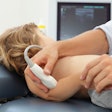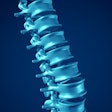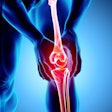
Despite its reputation as a sport of young thrill-seekers, snowboarding may be no more injurious than downhill skiing. But that doesn’t mean snowboarders aren’t a breed apart. For one thing, they suffer different kinds of injuries on the slopes.
Dr. Kristen Geiger, a pediatric orthopedics specialist at the Denver Orthopedic Clinic in Colorado, can quickly characterize the majority of snowboarding injuries.
"We see a bazillion distal radial fractures," said Geiger, who is also a recreational snowboarder, and co-author of an article summarizing the medical literature on the sport’s injuries (Postgraduate Medicine, January 1999, Vol. 105:1, pp. 83-88).
Geiger’s research found that snowboarders are far more likely to hurt their wrists than participants in other sports. Most such injuries occur when snowboarders fall backward or forward onto a hyperextended wrist. The problem is particularly common among beginners, who routinely fall while learning how to balance on a board sans ski poles.
The tendency toward wrist injuries declines as a boarder improves. One study found that 44% of injuries to beginning snowboarders involved their wrists, compared to just 14% of the injuries to experts (Skiing Trauma and Safety, Vol.13, American Society for Testing and Materials Special Technical Publication 1397).
But while experienced snowboarders fall less frequently, they often continue to test their abilities with extreme stunts.
"If an experienced snowboarder likes to do tricks, the more often he will fall," said Geiger, whose practice includes teenagers. "And they tend to be bigger (because they are older) so there’s greater force on the wrist when they land."
One study found that 65% of the wrist injuries from snowboarding are fractures (Journal of Pediatric Surgery, June 1995, Vol.30:6, pp. 791-794).
Thus, Geiger recommended taking x-rays from three views on any snowboarding wrist injury involving point tenderness. She also counsels snowboarders to wear wrist guards, noting that a common fear -- that the force of falls would be transferred to another part of the body -- appears to be overstated. "We have not had an onslaught of people with broken elbows who were wearing wrist guards," she said.
Still, as snowboarders rack up fractures at double the rate of downhill skiers, they inevitably break some bones beyond the wrist. And while these are far less common than wrist injuries, fractures of the lateral process of the talus are now known in some quarters as "snowboarder’s fracture," because they are seen far more often among the sport’s enthusiasts than in the general population.
The lateral process of the talus fracture accounts for a reported 15% of all ankle injuries in the sport, and 2.3% of all snowboarding injuries, compared with less than 1% of all ankle injuries among the general population (American Journal of Sports Medicine March-April 1998, Vol. 26:2, pp. 271-277).
Thus, x-ray evaluation is frequently warranted. Some researchers suggest that since the "snowboarder’s fracture" is often missed on plain radiographs, CT may be needed for diagnosis.
Snowboarding can also lead to clavicle fractures and rotator cuff strains. Radiographic evaluation for possible fracture is warranted in shoulder injuries where an attempt to reduce the dislocation has failed, Geiger wrote in her Postgraduate Medicine article.
Spleen injuries are also more common among snowboarders than in downhill skiers, and expert snowboarders are also more likely to suffer head injuries as they gain speed and try more dangerous jumps. Often they are fully cognizant of the dangers; among the young males who dominate the sport, such stunts are known as seeking "hospital air."
One trauma center in Denver found that 54% of the referred snowboarding injuries were closed head traumas, compared with 40% of the downhill skiing injuries (Injury, October 1995, Vol.26:8, pp. 539-542).
Geiger said snowboarders should take a cue from the pros and use protective headgear. "It’s very uncommon for kids to get concussions when they wear helmets," she said.
But despite all the potential dangers, Geiger reiterates that snowboarding is no more injurious than skiing. She cites the anecdotal experience of a fellow orthopedist practicing at a Colorado ski resort.
"They easily see 20 to 30 radial fractures a day, but they also see 20 to 30 ACL tears a day among adult downhill skiers," Geiger said. Overall, she joked, "It’s very good for business."
By Tracie L. Thompson
AuntMinnie.com contributing writer
February 19, 2002
Copyright © 2002 AuntMinnie.com


















